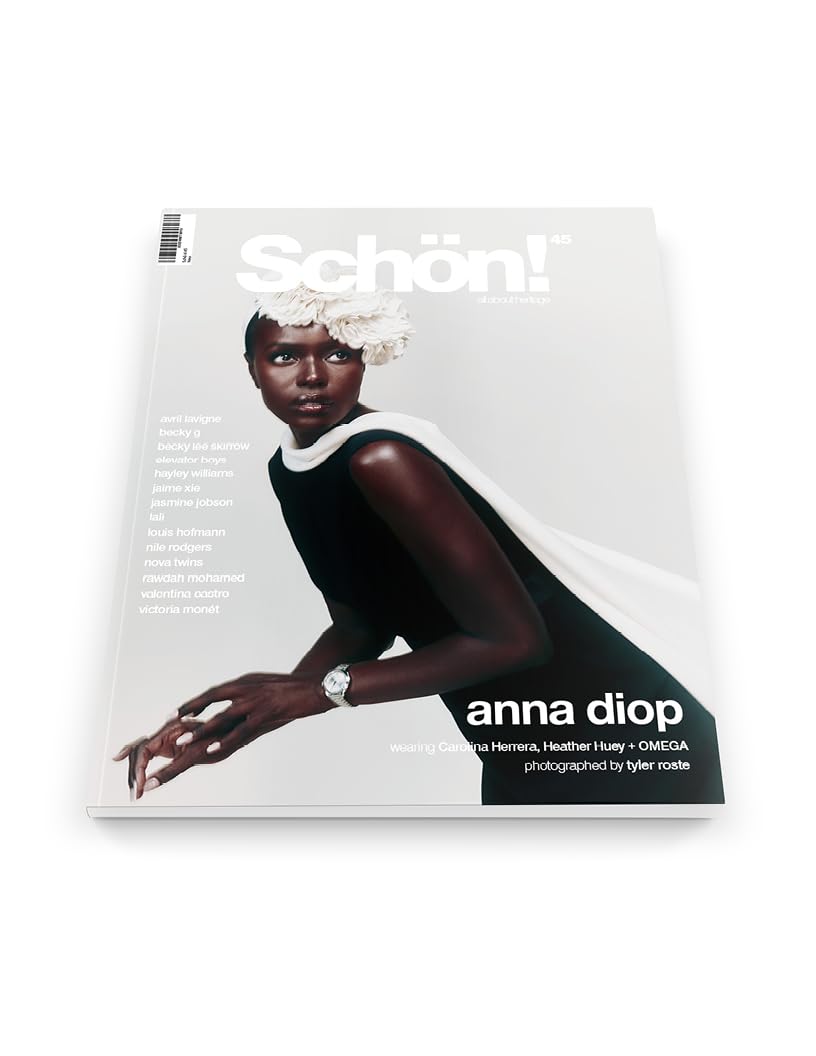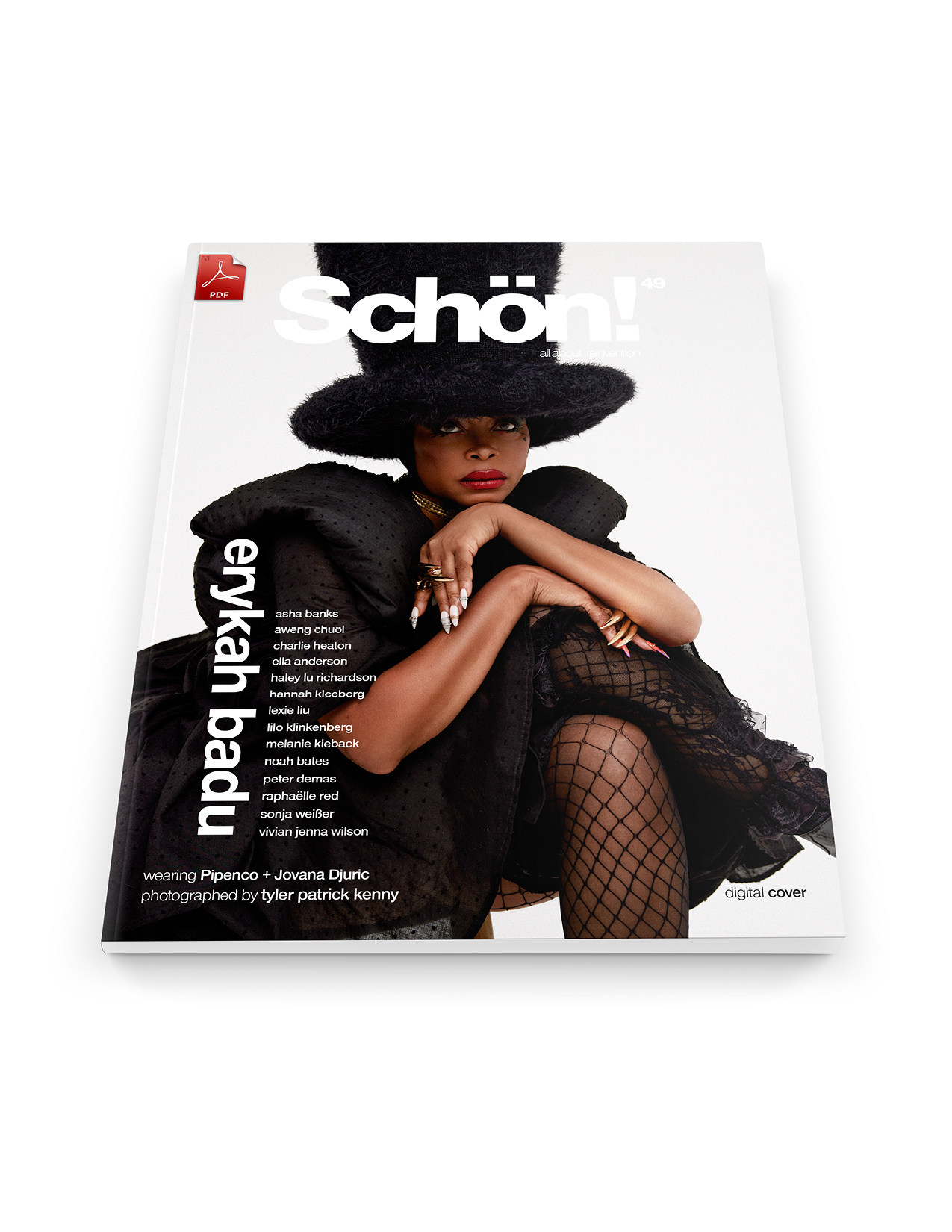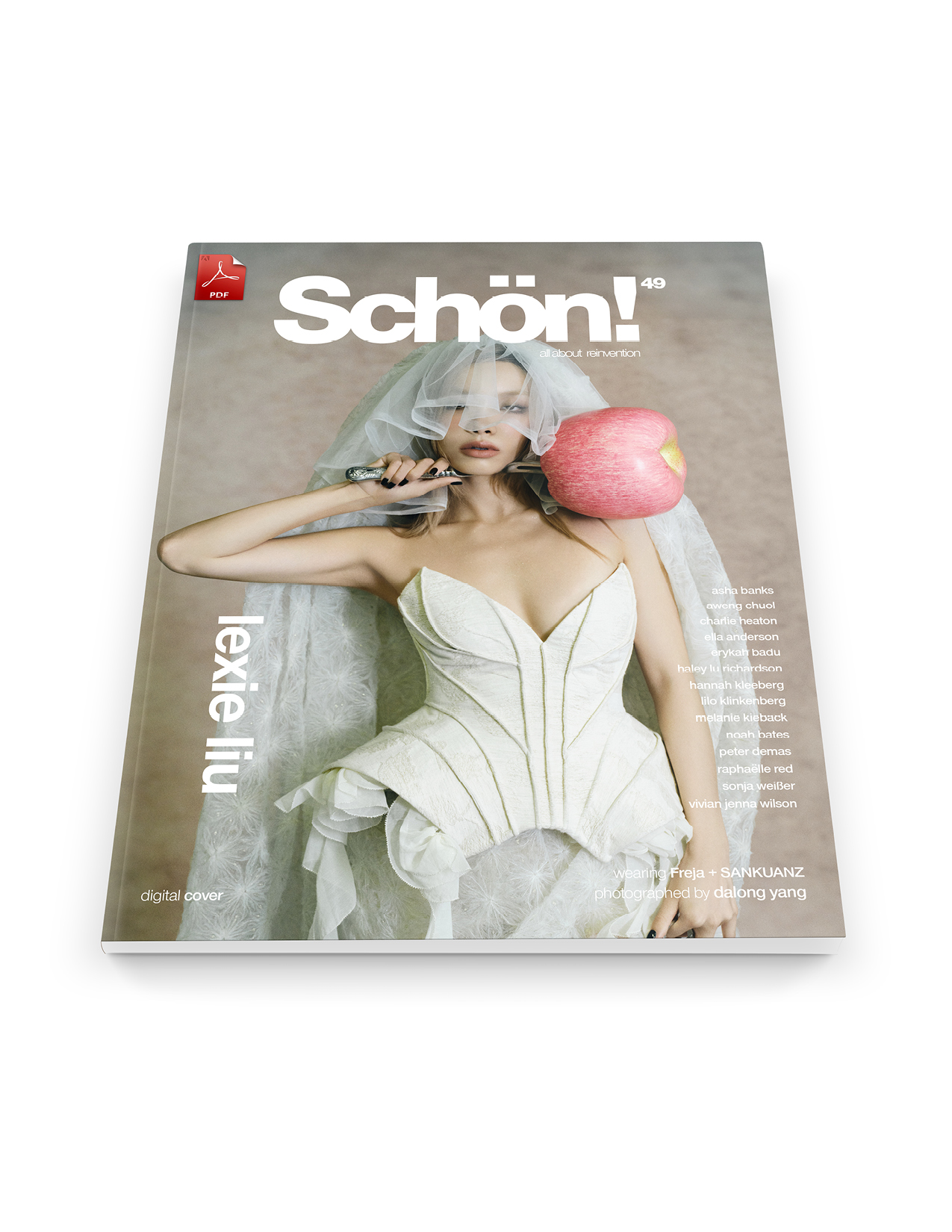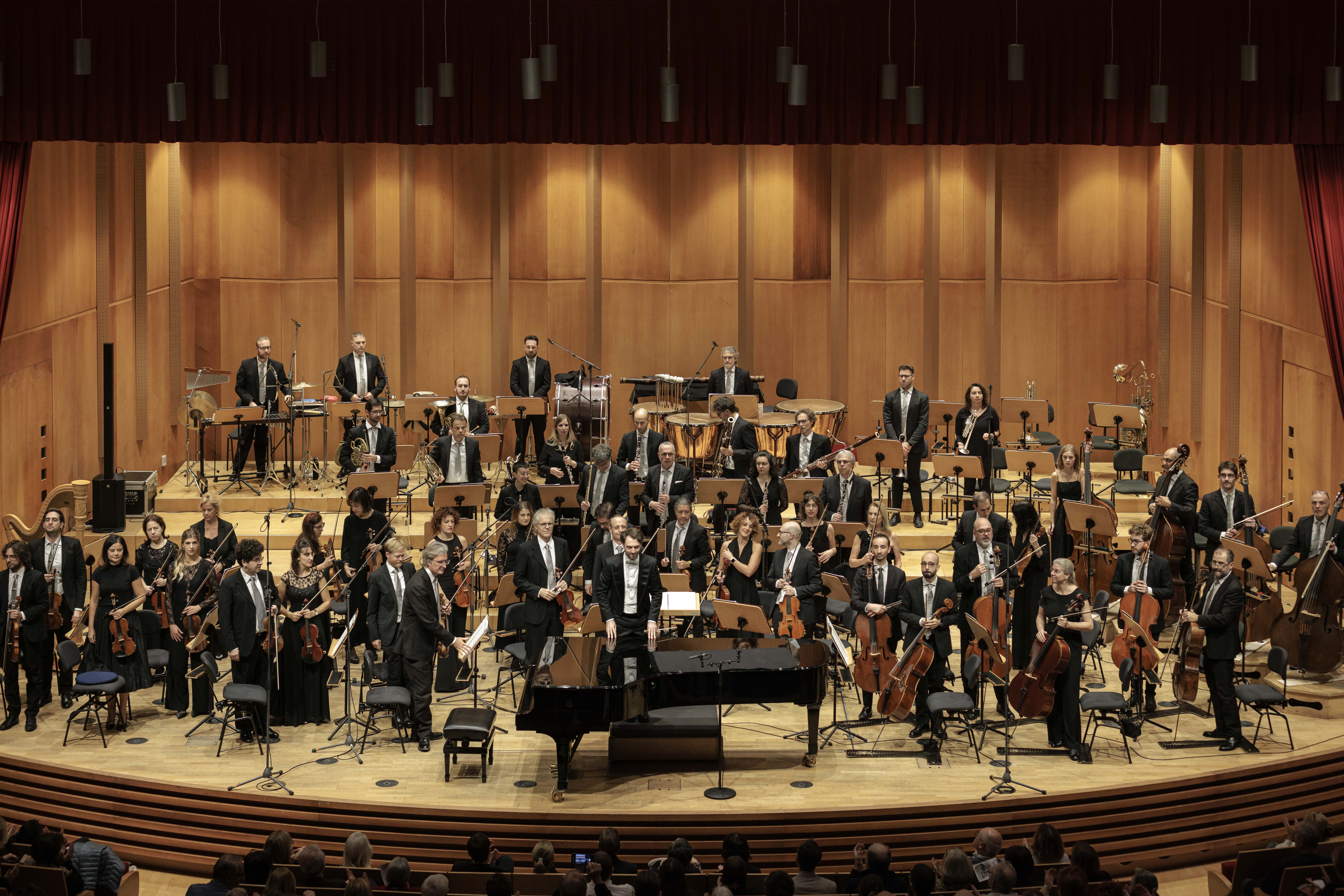
Joanna Dudley has long been known for her empowering and captivating performances, choreography, and installations. The Australian director, musician, and performer combines the beauty of art with various cultural references and political values to create transformative experiences. Collaborating on works such as the performance Refuse the Hour, Paper Music – which premiered at Carnegie Hall in New York and has since appeared at ArtBasel, Paris Philharmonie, and Holland Festival – and The Guided Tour of the Exhibition: for Soprano and Handbag, Dudley’s body of work is extensive.
In her latest performance piece, WE WILL SLAM YOU WITH OUR WINGS, Dudley explores strength and advocacy through a thought-provoking seven-screen video installation inspired by opera. The piece includes six girls ages 8 to 16 and urges spectators to examine societal issues through a political narrative.
In conversation with Schön!, Dudley chats all things WE WILL SLAM YOU WITH OUR WINGS, incorporating culture into her work, and building a space that gives girls power.

Can you describe your creative process when developing a new performance piece? Where do you typically find inspiration?
I start with building a visual world of inspiring images. I love this time; I just grab everything that triggers something. After a while, it becomes very clear that I can’t add any more, meaning I have finished building an essence of a world and I need to take the jump and begin building it. The main visual inspirations for me for WE WILL SLAM YOU WITH OUR WINGS were the photographs of Sally Mann of her children and casual photos of my niece who was featured in the installation and works of the outsider artist Henry Darger – who created collages and illustrations, specifically his fantasy novel titled The Story of the Vivian Girls.
A piece of music is also integral for me to begin. As soon as I have one piece of music that triggers the world, this creates the energy field for something to start. Ironically for WE WILL SLAM YOU WITH OUR WINGS , it was an opera aria by Puccini that I didn’t end up using, but it helped create a field for me to exist in at the beginning of the creative process.

How do different cultures influence your work, and can you give an example of a specific cultural element that has significantly impacted a project?
What a nice question. As an Australian, I was brought up in a culturally diverse environment where we learnt Greek, Chinese, and Indonesian at school because of the area where we were living. I feel so lucky to have grown up in such a culturally rich place and I know this feeds into everything I do, whether it be cooking, making art, or just being.
Different cultural influences are evident in all of my work. As a performer, I have developed a physical language that is very much my own and is highly influenced by the more minimal aesthetic found in some Asian performance cultures. As a flautist, playing Japanese contemporary music taught me how Japanese composers use silence as a powerfully expressive tool. The same for the way Javanese ceremonial dance taught me how elegantly powerful a slow movement framed with stillness can be.
I can give specific examples… After touring a wonderful piece with the Belgium choreographer Sidi Larbi Cherkaoui for 2 years, I went to study music and dance in Java. I needed a break from the European way of making art and this had been a wish of mine since I was young. I studied voice with one of the Javanese divas of 1960s popular traditional music, Waljinah. She taught me how to convey a story in song. I also studied the Javanese court dance during this time. I brought this material to the Berlin electro-noise musician, Schneider TM, and we created a musical performance. It became a new expression of the original material. It is important to say this is not cultural appropriation, as I knew the material I was working with, I had spent significant time learning it, and I was informed.
In WE WILL SLAM YOU WITH OUR WINGS, I was filmed after filming the girls and I realised it would be powerful if I was physically still. I would also not detract too much attention from the girls. I wanted most of my expression to happen in my hands. I looked at the hand positions of Asian statues of religious and non-religious characters where the position of the hands or a gesture provides information on their status as a powerful or spiritual figure.

Your latest exhibit, WE WILL SLAM YOU WITH OUR WINGS, brings together the voices of girls aged 8 to 16 and revises history by giving young women power and representation as new leaders and members of authority. Where did this idea come from?
I was in NYC working with William Kentridge on a blockbuster performance called The Head and the Load. It was late 2019, Trump was in power, and the #MeToo Movement was well underway. I was sitting in my dressing room in the incredible arts venue, The Park Avenue Armory, and feeling oddly uneasy. The Armory was originally a huge 19th-century gentlemen’s military club. Imperialistic portraits of men covered every inch of my dressing room. I was being looked down on by at least 30 sets of eyes from 30 military portraits. En masse, the absurdity of the situation kicked in, each man holding a gun in the same way, striking the same powerful stance in front of the same overly romantic European landscape.
At the same time, I was working with William again at the Met Opera on the opera Lulu. One day, the soprano who played Lulu was working on her death scene. I thought what an odd job this singer had. After this production, she would be rehearsing another role with a similar fate – dying again and again for her entire career.
The blatant frieze of elaborately destroyed women and stances of imperialistic men has been the disquieting norm of our cultural landscape for a long time now. Helping to create another narrative was what I wanted to do and I knew the people to join me in doing this were the most inspiring people I know in my life – girls. Specifically, the daughters of best friends and my brother. These are normal kids I’ve watched growing up and have inspired me with their fierce intelligence, courage, and sense of freedom.

You had to do an extensive amount of research to compile war speeches and manifestos from male directors and leaders from the past. What was that process like? What did you learn while curating the exhibit?
The declaration of war is the most horrendous form of masculine expression, so it made sense to work with them. I want people to recognise enough of the origins of my declaration of war speech, so I chose to use some of the most recognisable war speeches in history. The opera arias I use are German, English, and Italian, so I used the war declaration speeches of Goebbels, Churchill, and Mussolini. What was odd was that as a musician, I realised how there is a common dramaturgy in their tonality and rhythm, no matter when they were written and in what language declared. When looking at films of these leaders and dictators, there is often a common physical language when declaring such a speech. I found this odd, funny, and disturbing. The girls thought it was hilarious… especially when they started working with these familiar gestures of masculine power. What was also strange as a performer is to realise that this physical and vocal language is quintessentially, 100% male. It felt strange and cartoon-like to embody it, however, as a language, it is still the norm when it comes to people in power and we rarely question it.

What was it about the concept of power and subverting it to hand power back to young women that intrigued you?
I honestly feel that giving girls the power and the space to express themselves and for them to know that they have the chance, in their way, to rule countries, run big structures, invent, tell stories, and create change is the only way forward for us to evolve and survive as a world community. For me, to hand power to young women is an urgent necessity, not something that intrigues me.

Was there any aspect of creating the exhibition that surprised you?
The fierce intelligence of the young girls I worked with made me very happy. It also surprised me how aware they were of the themes we were dealing with and how these can affect their lives and their choices if they allow them to. They questioned everything and expected to be listened to and to talk about the process. The 8-year-old Beatrix had a different understanding from the 16-year-old Kittu, but they understood so much about the necessity for new stories to be told about women and girls and that they need to be told by women and girls for the narrative and the path to change. Their very natural awareness of this happily surprised me.
For those who may not agree with ‘revisionist history,’ what do you hope they take away from the exhibit?
I would hope that they would rethink their view. There is something about seeing children show things for what they are. We inherently care for children, even if they are not our own. So, to see children show to an adult audience that current narratives and patterns of power are wrong, it is more likely that it will have an impact and that the absurdity, inequality, and injustice will sink in. So yes, I hope they change their view, no less.

You often collaborate with other artists and performers. How do these collaborations shape the final product of your work? What was it like working with young women for this exhibition?
I love how an idea evolves and turns into something you may not have imagined when you collaborate or it is what you imagined, just a whole lot better. I collaborate only with people I adore and hugely admire. My ideas are usually quite detailed and complete, so I need people around me who know my world, are damn good, and I know will take my ideas even further. The girls created their characters and these characters are the piece. The oldest child, Kittu, helped create the basic exercises each girl worked on to create material. Each girl, however, gave it so much of their spin which is crucial for this piece to work. Beatrix is the youngest and had a lot of energy, so we had a couch off-camera so that she could jump in and out of the filmed space. She is the only character who breaks the “portrait” frame. The editing rhythm for her was also faster than the others, as it suited her way in the space. So not only did their personalities affect the material, but also how I edited their films. The process was a longer one than normal, in that the girls and I needed time to talk about what they were doing and why. If they didn’t like an idea, we scrapped it.

One of the goals of this exhibition is to invite people to see a world where young girls can be creators and leaders. For young women looking to pursue a similar career to yours, what advice would you give them?
Surround yourself with people you feel are more experienced than you – people who inspire you and you feel you can learn from. Seek them out and ask to work with them. Learn something new with each new project you do.
Look to other cultures – not only Western – for inspiration and learn about these cultures. Travel to places beyond those you know. Don’t question learning new skills at any point in your career – if you are interested in something just for the sake of it, learn it. You never know how this will feed into your work at some point. Be open to other people but be honest and clear about what you want and don’t apologise for being strong or saying what you think. Problem-solving is a fun journey that involves more than one person and isn’t a competition.
‘Quiet strong’ is also strong, but there will be times when you will need to raise your voice to be heard, as the world has been created that way (unfortunately), so just do it. It’s important your voice is heard. Also, know when to shut up, though, and learn from what is happening around you. Voicing your opinion or showing who you are and what you can do isn’t always the most important thing.
Don’t become ungenerous, mistrusting, or neurotic – this will show on your face and in your body later in life and it won’t look or feel good. Never accept mansplaining or any form of manipulation – ever. Show it for what it is and move on. Lastly – very practical – become knowledgeable of finances and invest early, especially as a freelancer. This will give you a secure financial base, so you can do more of what you want to do in life. Also, learn about personal finances from other women. Talk to your colleagues about money and problems you or they may be having in your area of work, whether financial or other. Share this information and support each other, otherwise our workplace won’t evolve.

‘WE WILL SLAM YOU WITH OUR WINGS’ is on view at Fotografiska Berlin until September 15th.
photography. Joanna Dudley + Catherine Meyburgh
interview. Raoul Keil

























































































